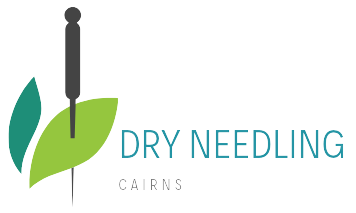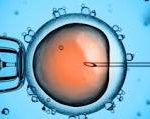Hi there, we are a dry needling clinic in cairns with a special interest in Fertility, childbirth and pregnancy.
We may be able to assist your conception in conjunction with your fertility doctor.
- alongside your ivf cycle
- to help you 3 months leading up to your ivf cycle
- to help you in between ivf cycle.
Make an Appointment today
If you would like to check our available appointment times or make a booking please click on this link http://cairns-massage-cairns-acupuncture.au1.cliniko.com/bookings
or click on this link https://dryneedlingcairns.com.au and go to book online button.
or you can click the book online button on the www.cairnsmassage.net.au website.
or send a text to 0408 054 538.
Does it Hurt?
Some sensitive patients do feel some discomfort when the needles first go in, but most people are pleasantly surprised at how comfortable dry needling therapy is, often falling asleep on the treatment table. The needles are generally between 0.2 and 0.25mm in width. Five of these fit in the bore of one hyperdermic needle….they are as fine as a human hair!
They are inserted quickly to minimize skin pain, and when correctly stimulated, there is a feeling of tingling, mild cramping or an electric sensation at the point.
How deep the needles are inserted varies from a few millimetres to a couple of inches or more depending on the size of the patient and where the point lies on the body.
Please phone Tanya on 0408 054 538 or email tanyagalvin@hotmail.com
Acupuncture fertility whitfie
I would like to chat now about a technique called cuppingCupping therapy is an ancient form of alternative medicine in which a therapist puts special cups on your skin for a few minutes to create suction. People get it for many purposes, including to help with pain, inflammation, blood flow, relaxation and well-being, and as a type of deep-tissue massage.The cups may be made of:
- Glass
- Bamboo
- Earthenware
- Silicone
Cupping therapy might be trendy now, but it’s not new. It dates back to ancient Egyptian, Chinese, and Middle Eastern cultures. One of the oldest medical textbooks in the world, the Ebers Papyrus, describes how the ancient Egyptians used cupping therapy in 1,550 B.C.
Types
There are different methods of cupping, including:
- Dry
- Wet
During both types of cupping, your therapist will put a flammable substance such as alcohol, herbs, or paper in a cup and set it on fire. As the fire goes out, he puts the cup upside down on your skin.
As the air inside the cup cools, it creates a vacuum. This causes your skin to rise and redden as your blood vessels expand. The cup is generally left in place for up to 3 minutes.
A more modern version of cupping uses a rubber pump instead of fire to create the vacuum inside the cup. Sometimes therapists use silicone cups, which they can move from place to place on your skin for a massage-like effect.
Wet cupping creates a mild suction by leaving a cup in place for about 3 minutes. The therapist then removes the cup and uses a small scalpel to make light, tiny cuts on your skin. Next, he or she does a second suction to draw out a small quantity of blood.
You might get 3-5 cups in your first session. Or you might just try one to see how it goes. It’s rare to get more than 5-7 cups, the British Cupping Society notes.
Afterward, you may get an antibiotic ointment and bandage to prevent infection. Your skin should look normal again within 10 days.
Cupping therapy supporters believe that wet cupping removes harmful substances and toxins from the body to promote healing. But that’s not proven.
Some people also get “needle cupping,” in which the therapist first inserts acupuncture needles and then puts cups over them.
Dry needling’s primarily focused on reducing pain and restoring function through the release of myofascial trigger points in the muscle.
What is a Myofascial Trigger Point?
A myofascial trigger point, also known as a knot in the muscle, is a group of muscle fibres that have shortened when activated but have not lengthened back to a relaxed state after use. A myofascial trigger point develops a sensitive nodule in the muscle (Simons, Travell & Simons, 1999). In addition to this nodule, the remainder of the muscle also tightens to compensate (Simons et al., 1999; Simons, 2002). This hypersensitivity occurs as the muscle fibres become so tight that they compress the capillaries and nerves that supply them (McPartland, 2004; Simons et al., 1999). As a result, the muscle cannot frequently move, obtain a fresh blood supply containing oxygen and nutrients, or flush out additional acidic chemicals (McPartland, 2004; Simons et al., 1999). The presence of a myofascial trigger point in a muscle can lead to discomfort with touch, movement and stretching, decreased joint motion, and even a temporary loss of coordination (Simons et al., 1999).
How Does Dry Needling Work?
Dry needling assists with decreasing local muscular pain and improve function by restoring a muscle’s natural ability to lengthen and shorten by releasing myofascial trigger points.
What Does Dry Needling Do?
When the delicate filament needle inserts into the centre of a myofascial trigger point, blood pools around the needle, triggering the contracted muscle fibres to relax. This reaction, in turn, leads to the decompression of the local blood and nerve supply. It also helps to provide those fibres with fresh oxygen and nutrients and flushing away any additional acidic chemicals.
What Causes a Myofascial Trigger Point?
A myofascial trigger point develops as part of the body’s protective response following:
- injury – the muscle will tighten in an attempt to reduce the severity of an injury;
- unexpected movements, e.g. descending a step that is lower than initially anticipated;
- quick movements, e.g. looking over your shoulder while driving;
- change in regular activity or muscle loading, e.g. an increase in the number or intensity of training sessions for sport;
- sustained postures e.g. prolonged sitting for work or study;
- nerve impingement – the muscle will tighten to protect the nerve;
- stress;
- illness (bacterial or viral);
- nutritional deficiencies, or;
- metabolic and endocrine conditions.
(Simons, et al., 1999)
When Is Dry Needling Treatment Recommended?
Dry needling can assist in treatment:
- to help release myofascial trigger points (muscle knots);
- to assist with pain management, and;
- to restore movement at a joint if inhibited by myofascial trigger points.
What Will You Feel During Dry Needling Treatment?
During a dry needling treatment, you may feel a mild sensation as the needle inserts and withdraws. Patients don’t report any discomfort during needle manipulation.
A brief muscle twitch may occur during a dry needling treatment. This twitch may happen when the needle directly stimulates a myofascial trigger point.
Where Does Dry Needling Fit Within Your Rehabilitation Program?
Dry needling is one of many techniques that your physiotherapist can utilise to assist with your rehabilitation. We combine dry needling with other physiotherapy techniques, including massage, manual therapy, and exercise prescription.
What are the Side Effects of Dry Needling?
Every form of treatment can carry an associated risk. Your physiotherapist can explain the risks and determine whether dry needling is suitable for you based on your injury and general health.
When dry needling occurs, single-use, sterile needles are always used and disposed of immediately after using a certified sharps container.
Is Dry Needling Safe?
Everybody is different and can respond differently to various treatment techniques, including dry needling. In addition to the benefits that dry needling can provide, some side effects may occur, including spotting or bruising, fainting, nausea, residual discomfort or even altered energy levels. However, these symptoms should last no longer than 24 to 48 hours after treatment.
Can You Exercise After Dry Needling?
We recommend avoiding strenuous or high impact activities immediately after dry needling to allow the body time to recover and maximise the treatment benefits.

